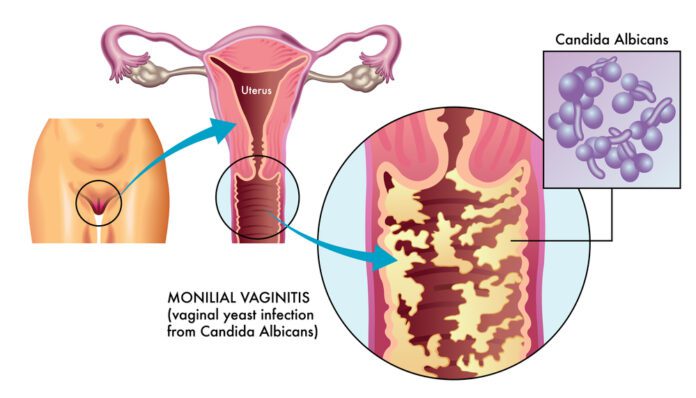Overview Of Vaginitis
Vaginitis, also called Vulvovaginitis, is an inflammation or infection of the vagina. It can also affect the vulva, which is the external part of a woman’s genitals. Vaginitis can cause itching, pain, discharge, and odor.
Vaginitis is common, especially in women in their reproductive years. It usually happens when there is a change in the balance of bacteria or yeast that are normally found in your vagina. There are different types of vaginitis, and they have different causes, symptoms, and treatments.
Causes Of Vaginitis
Bacterial vaginosis (BV) is the most common vaginal infection in women ages 15-44. It happens when there is an imbalance between the “good” and “harmful” bacteria that are normally found in a woman’s vagina.
Many things can change the balance of bacteria, including:
- Taking antibiotics
- Douching
- Using an intrauterine device (IUD)
- Having unprotected sex with a new partner
- Having many sexual partners
Yeast infections (candidiasis) happen when too much candida grows in the vagina. Candida is the scientific name for yeast. It is a fungus that lives almost everywhere, including in your body.
You may have too much growing in the vagina because of:
- Antibiotics
- Pregnancy
- Diabetes, especially if it is not well-controlled
- Corticosteroid medicines
- Trichomoniasis can also cause vaginitis. Trichomoniasis is a common sexually transmitted disease. It is caused by a parasite.
You can also have vaginitis if you are allergic or sensitive to certain products that you use. Examples include vaginal sprays, douches, spermicides, soaps, detergents, or fabric softeners. They can cause burning, itching, and discharge.
Hormonal changes can also cause vaginal irritation. Examples are when you are pregnant or breastfeeding, or when you have gone through menopause.
Sometimes you can have more than one cause of vaginitis at the same time.
Symptoms Of Vaginitis
The symptoms of vaginitis depend on which type you have.
With BV, you may not have symptoms. You could have a thin white or gray vaginal discharge. There may be an odor, such as a strong fish-like odor, especially after sex.
Yeast infections produce a thick, white discharge from the vagina that can look like cottage cheese. The discharge can be watery and often has no smell. Yeast infections usually cause the vagina and vulva to become itchy and red.
You may not have symptoms when you have trichomoniasis. If you do have them, they include itching, burning, and soreness of the vagina and vulva. You may have burning during urination. You could also have gray-green discharge, which may smell bad.
Exams & Tests
To find out the cause of your symptoms, your health care provider may:
- Ask you about your medical history
- Do a pelvic exam
- Look for vaginal discharge, noting its color, qualities, and any odor
- Study a sample of your vaginal fluid under a microscope
- In some cases, you may need more tests.
Treatment
The treatment depends on which type of vaginitis you have.
BV is treatable with antibiotics. You may get pills to swallow, or cream or gel that you put in your vagina. During treatment, you should use a condom during sex or not have sex at all.
Yeast infections are usually treated with a cream or with medicine that you put inside your vagina. You can buy over-the-counter treatments for yeast infections, but you need to be sure that you do have a yeast infection and not another type of vaginitis. See your health care provider if this is the first time you have had symptoms. Even if you have had yeast infections before, it is a good idea to call your health care provider before using an over-the-counter treatment.
The treatment for trichomoniasis is usually a single-dose antibiotic. Both you and your partner(s) should be treated, to prevent spreading the infection to others and to keep from getting it again.
If your vaginitis is due to an allergy or sensitivity to a product, you need to figure out which product is causing the problem. It could be a product that you started using recently. Once you figure it out, you should stop using the product.
If the cause of your vaginitis is a hormonal change, your health care provider may give you estrogen cream to help with your symptoms.



